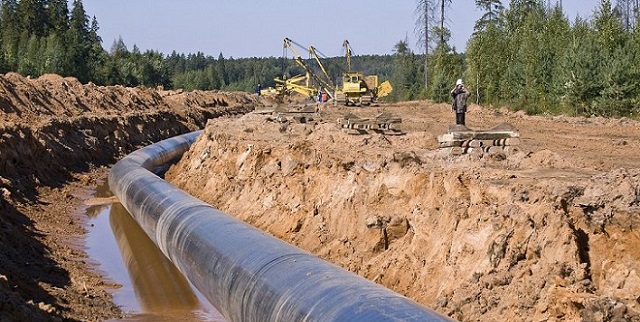
Contractor, gov’t offer pointers, urge suppliers to get ready
Kampala, Uganda | RONALD MUSOKE | Excitement filled Hotel Africana’s spacious Nile Hall on Jan.17 as hundreds of local suppliers braced for details about the specifics of the $ 3.55 billion pipeline deal contained in the study about its engineering designs.
Houston-based Gulf Interstate Engineering (GIE) carried out the year-long study at $ 11.5 million to guide Total, CNOOC, Tullow, the Uganda National Oil Company (UNOC) and the Tanzania Petroleum Development Corporation (TPDC) on investing in the project.
The Africana event, officials said, was intended to share findings of what is technically called the Front End Engineering Designs (FEED) of the pipeline with potential suppliers to help them identify and prepare for business opportunities.
But as Mark Lamb, a jovial elderly engineer at GIE delved into what Ugandans are expected to do to partake of the expected billions, gloom permeated the hall.
“How ready do you think we are?” Elly Karuhanga, the Chairman of the oil and gas investors lobby—the Uganda Chamber of Mines and Petroleum (UCMP) asked rhetorically. He also noted that that Lamb’s presentation had filled Ugandans with fear and that he felt they might not be “field ready.”
Karuhanga’s observation could also be seen in the questions that Lamb received from the Ugandan prospective service providers.
“Shall we be allowed to cross to Tanzania to do business there? How are the two countries’ standards going to be harmonized? Is it possible for Ugandan service providers to bid beyond Tanzania?”
The anxiety is mainly driven by the fact that the portion of the pipeline in Uganda is only about 296km which is about 21 percent of the entire route. The bulk of it, 1,149km is in Tanzania. Given that the whole deal is $ 3.55 billion, if Ugandans were to get deals on only the portion in the country, they would be looking at a paltry $743.5 million.
Patrick Odwe, a local service provider feels that this would be unfair given that Uganda is the source of the opportunity—the oil.
The pipeline is set to carry oil from fields in Uganda currently being developed. So far, the fields are two—the Total E&P operated Tilenga project in Buliisa and Nwoya Districts and the CNOOC operated Kingfisher project in Hoima District.
The Tilenga project will have a processing facility with capacity of up to 190,000 barrels of oil per day and the Kingfisher project, 40,000 barrels of oil per day. These processing facilities will feed into the refinery and the 1,445km pipeline terminating at Chongoleani peninsula near the Tanga Port in Tanzania.
It will comprise a buried insulated 24” pipeline with an electrical heat tracing system associated above ground facilities, and a marine storage terminal with export facilities near Tanga.
It will start from Kabaale and traverse eight districts including Hoima, Kyakwanzi, Kakumiiro, Mubende, Gomba, Ssembabule, Lwengo and Rakai. It will then enter Tanzania through Mutukula to Chongoleani in Tanga on the Indian Ocean coast.
Expect high standards
But rather than worry about whether there would be access to deals in Tanzania, Lamb appeared to urge suppliers to concentrate on their core competencies and create a track record.
He said the project’s codes and standards have been borrowed from best practices around the world to ensure safety of the project and that they will have to be strictly complied with.
“Every service provider including suppliers and contractors will be bound by all these regulatory requirements (safety, construction, operation and IFC regulations),” he said, “We don’t want to do it fast we want to do it right so the project survives for 25 years.”
In describing the work packages that may hold interest for Ugandan businesses, Lamb said the project has four tiers of contracts.
He said Tier-4 looks at the more technical service suppliers like Halliburton and Schlumberger and Tier-1 is looking at basic supplies like labour, security, field inspections, pipeline, safety, and electrical inspectors.
“This is where a lot of opportunity is,” Lamb said. About 10,000 people are expected to be employed during the construction phase.
“There will be early civil works (building camps, temporary and permanent roads for the pump stations).”
About 2.6 million cubic metres of earth will have to be moved, he added and there will be need for portable power generators. There will be temporary fencing, permanent fencing, construction labour, dry land transport, and security along the pipeline.
“There will be need for manual, semi-skilled and skilled camp managers, foremen, drivers, supervisors, warehouse managers, equipment operators. This meeting is about business opportunities, so get ready, get ready.”
 The Independent Uganda: You get the Truth we Pay the Price
The Independent Uganda: You get the Truth we Pay the Price


